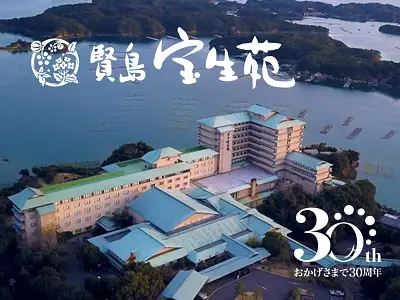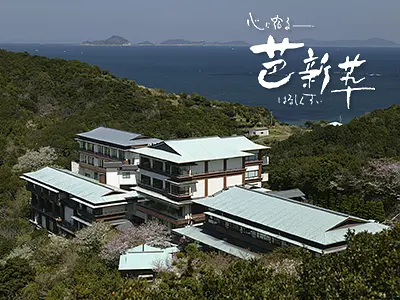【終了しました】いわさきちひろ展が三重県で開催!鑑賞レポート、お得なチケットの購入方法・場所などを紹介します!
掲載日:2022.07.07
いわさきちひろ展が三重県立美術館にて2022年7月16日(土)〜8月28日(日)に開催。鑑賞レポート、お得なチケットの購入方法・場所などを紹介します!
「いわさきちひろ」とは
<いわさきちひろ「赤い帽子の男の子」1971年 ちひろ美術館蔵>
1918 年、福井県武生(現・越前市)に生まれ、東京で育ち、1936 年、東京府立第六高等女学校卒業。絵は岡田三郎助、中谷泰、丸木俊に師事。1950 年、紙芝居『お母さんの話』を出版、文部大臣賞受賞。同年、松本善明と結婚、翌年、長男猛を出産。絵本などの子どもの本を中心に、新聞、雑誌、カレンダーなどさまざまな印刷メディアに絵を描きました。
「いわさきちひろ」の作風と師・中谷泰について
<いわさきちひろ「ひまわりとあかちゃん」1971年 ちひろ美術館蔵>
にじんだ色彩で描かれた子どもたちや花々のすがた。「いわさきちひろ」が描く明るく、甘く、やわらかな絵画世界は、国や世代、性別などあらゆるものを越えてひろく愛され続けています。
「いわさきちひろ」が絵本画家として歩み始める以前のこと、いわば模索期にあたる1940 年代前半に、ある画家との出会いがありました。その名は、三重県松阪市出身の中谷泰(なかたに たい)。「いわさきちひろ」は中谷の作品に感化され、中谷のもとで油彩画の指導を受けました。戦争により彼らの芸術活動は中断を余儀なくされますが、戦後、「いわさきちひろ」は童画家として、中谷泰は洋画家として、活躍の幅を広げていきました。
三重県立美術館で2022年7月16日(土)から8月28日(日)まで開かれている「いわさきちひろ展」では、”中谷泰を師として”という、これまであまり知られてこなかったふたりの交流を、「いわさきちひろ」の絵本の原画や油彩画、素描等約110 点、中谷泰の油彩画・素描等約40 点、関連資料約20 点により紹介しています。
「いわさきちひろ展」を実際に鑑賞してきました!
三重県立美術館で開催されている「いわさきちひろ展」に、特別に学芸員の方のお話を聞きながら、実際に鑑賞してきました。いわさきちひろの作品を中心に、実際に展示されている章ごとにレポートさせていただきます。
※特別に許可を得て、実際に展示されている作品を撮影させていただいております。実際の作品を直接ご覧になられたい方はご注意ください。
※書き手の感想を含みますのでご了承ください。
序章:それぞれの東京
ここで紹介されているのは、二人が直接出会う前のこと。それぞれの感性を磨きながら、東京で過ごしたようです。
ここでは、いわさきちひろの幼少期の写真、中谷泰の「自画像」「婦人像」が展示されています。
左から<中谷泰「婦人像」1932年><中谷泰「自画像」1931年>
1章:師・中谷泰との出会い
いわさきちひろと中谷泰がいつ出会ったのかというのは、いまのところ明確にはわからないようです。が、1941年秋ごろには知り合い、いわさきちひろが絵のモデルを務めたのではないかと推測されています。
1942年の第20回春陽会展に中谷泰が出品した「婦人像」のモデルは、いわさきちひろと伝えられています。
<中谷泰「婦人像」1942年>
また、ここで展示されている「なでしことあざみ」ですが、戦前・戦中のいわさきちひろの油彩画は、この1点しか確認されていない貴重なものだとか(1945年5月の空襲によりいわさきちひろの自宅が焼け出されたため)。
花や葉の平面的な描き方は、展示されている中谷泰の「水浴」や「農家の人々」にも共通して見られるものとのことで、見比べてみると興味深いかもしれませんね。
<いわさきちひろ「なでしことあざみ」1940年代前半 ちひろ美術館蔵>
2章:戦後の再出発
中谷泰は、終戦翌年から展覧会への出品を再開し、いわさきちひろは、疎開先の松本から上京して絵を学び、また新聞社の記者として記事と挿絵を手がけたのことです。
いわさきちひろの挿絵などが多く展示されています。
ちなみにいわさきちひろが、日本童画会に入会したのも、紙芝居「お母さんの話」を手がけたのもこの頃で、この紙芝居はのちに出版されて文部大臣賞を受賞したそうです。
3章:社会/家庭へのまなざし
結婚し、長男も出産した、いわさきちひろ。家族への限りない愛情が原動力となり、新聞や雑誌の仕事もこなしつつ、油彩画の制作も行っています。また中谷泰も結婚し、二男一女の父となり、子どもや母子の姿が登場します。
こちらの章は、二人の家族への深い愛情がうかがえる展示になっております。
<いわさきちひろ「子ども」1962年 ちひろ美術館蔵>
4章:色の広がり、線のリズム
いわさきちひろの作風として、すでに子どもや親子像がモチーフとして描かれてきましたが、ここでは、色や線の変化に注目とのこと。
どこかで見てどこか懐かしく感じる、童話「つるのおんがえし」「マッチ売りの少女」などの童画、また中谷泰の挿絵原画もあわせて展示されています。
見たことある!ってなる方も多いかもしれませんね。
5章:旅を通じて世界をみつめる
1960年代、いわさきちひろは旧ソビエトやヨーロッパを旅しました。この”世界”を感じる旅で、アンデルセンの「絵のない絵本」の絵本創作への意欲につながったとか。
その後も、世界中の子どもたちに、平和と幸せが訪れることを強く願い、絵の中に子どもたちの姿を描き続けたそうです。
6章:ちひろの世界/絵本の世界
誰もが一度は目にしたことがあり、どこか懐かしく感じる、いわさきちひろの絵本。なかでも、「あめのひのおるすばん」に始まる至光社の絵本は、これまで以上に大胆な筆の運びや絵の具のにじみを用いて制作された意欲的なシリーズとのこと!
絵を見たら、いわさきちひろとわかるほどの、絵の具のにじみ、独特のやわらかな色合い。
<いわさきちひろ「お母さんに抱きつく子」1968年 ちひろ美術館蔵>
大人も子どもも、どことなく優しい気持ちになれる、そんな空間が広がっています。
左から<いわさきちひろ「赤い帽子の男の子」1971年 ちひろ美術館蔵><いわさきちひろ「五つぶのえんどう豆」1973年 ちひろ美術館蔵>
番外編:大人も子どもも、ちひろの絵の中であそぼう!
いわさきちひろの世界観を実際に体感できる仕掛けも!
「にじみ」をからだを使って描く体験型アート「絵の具の足あと」。
歩くたびにキャンバスに広がる、にじみの足跡に子どもたちは夢中!
こちらは「白抜き」を体を使って描く体験型アート「絵のなかの子どもたち」。
どんなポーズでも”絵”になり、アート作品になってしまいます!
こちらの体験については、なんとどちらも撮影OK(動画の撮影はできません)!鑑賞記念になること間違いなしです。
※譲り合ってご鑑賞ください。
ロビーにはいわさきちひろグッズが!
ロビーには、いわさきちひろの世界観が広がるオリジナルグッズが販売されています!
バッグやポストカードなど、どれもこれも欲しくなるものばかり♪
「いわさきちひろ展」に入場しなくても、ロビーは無料で入ることは可能なので、気軽に入館し、グッズを購入することができます。
以上、「いわさきちひろ展」の鑑賞レポートでした。
どこかで見たことがある、どこか懐かしい気がする展示会でした。
令和4年8月28日(日)まで開催されているのでぜひ訪れてみてくださいね。
「いわさきちひろ展」のチケットの主な購入場所と観覧料
「いわさきちひろ展」のチケットの主な購入場所と観覧料については、以下のとおりです。津駅西口近鉄窓口では、前売り金額(料金)で購入することが可能です。
三重県立美術館
一般 1,000 円(800円)
学生 800円 (600円) 高校生以下 無料
※( )内は前売り金額および20名以上の団体割引料金です。
※この料金で常設展示室「美術館のコレクション」、柳原義達記念館も観覧できます。
※障害者手帳等(アプリ含む)をお持ちの方および付きそいの方1名は無料。展示室入り口で手帳を提示ください。
※生徒、学生の方は生徒手帳、学生証等を展示室入り口で提示ください。
※教育活動の一環として県内学校(小・中・高・特支)および相当施設が来館する場合、引率者も観覧無料です。(要申請)
※毎月第3日曜の「家庭の日」(8月21日)は団体割引料金で観覧できます。
津駅西口近鉄窓口
一般 800円
学生 600円 高校生以下 無料
※購入できる時間は、平日10時~19時、土休日は9時~18時です。
三重県立美術館の基本情報、観覧料、交通アクセス
| 住所 | 〒514-0007 津市大谷町11番地 |
|---|---|
| 電話番号 | 059-227-2100 |
| 営業時間 | 9時30分から17時まで(入館は16時30分まで) |
| 休業日 | 月曜(祝日休日にあたる場合は開館、翌日閉館) |
| いわさきちひろ展料金 | 一般:1000円 学生:800円(高校生以下無料) ※この料金で常設展もご覧いただけます |
| 主なチケットの購入場所 | ・美術館窓口(通常料金・各種割引あり) ・津駅西口近鉄窓口(前売料金(200円引き)) |
| 電車でのアクセス | 津駅西口から徒歩約10分または津駅西口から三交バスで「美術館前」下車徒歩1分 |
| 車でのアクセス | 伊勢自動車道「津IC」から約15分 |
| 駐車場 | 無料約130台 |
| トイレ | あり(多機能トイレ含む) |
| 企画展URL | https://www.bunka.pref.mie.lg.jp/art-museum/000262620.htm |


